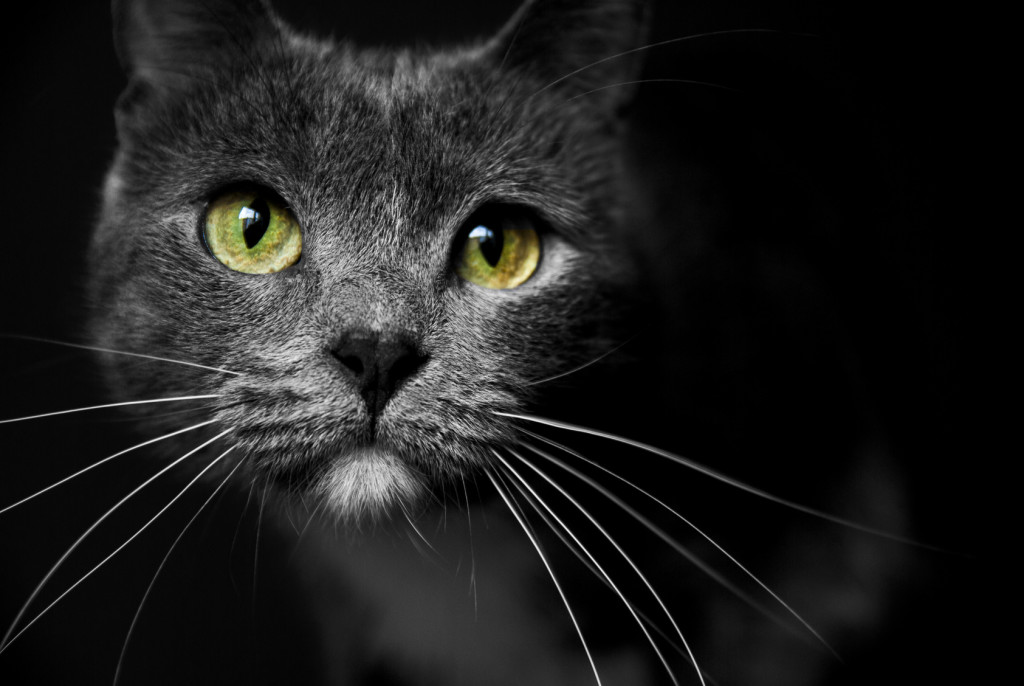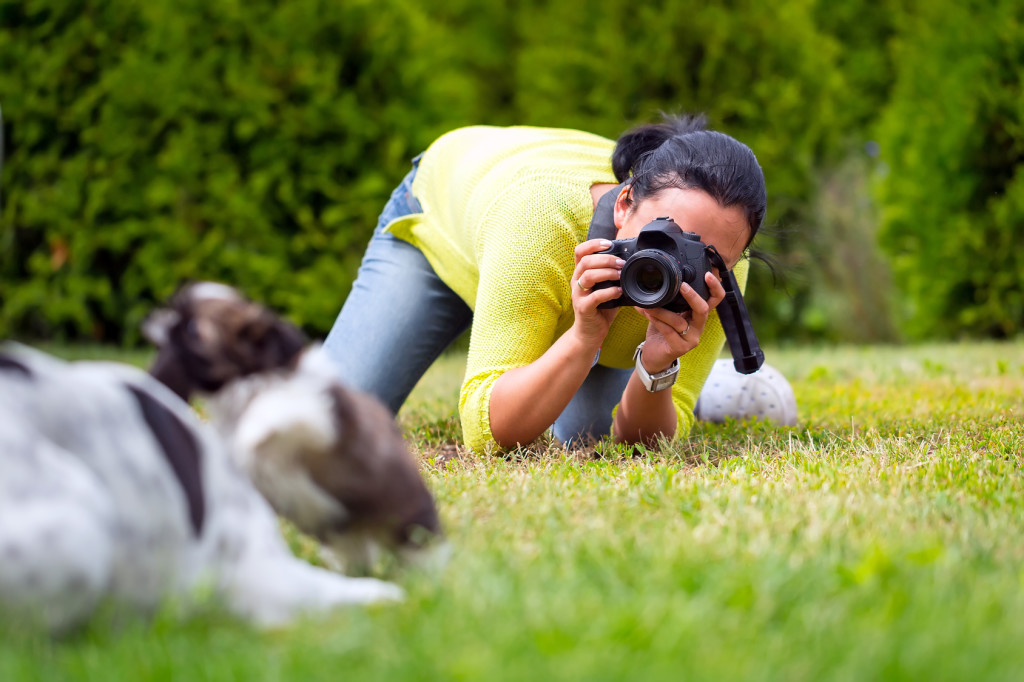Taking really great pictures of your pets can be just as difficult as taking pictures of small children -- in fact, even more so. It's just not possible to get your cat or dog to understand you'd like to start a photo session. They tend to just do their thing, because that's how pets are. Yet, in a way, that's a good thing, because having pets (or humans) do what they do and capturing that moment is one of the keys to taking great pictures of just about any subject.

Light
First, you should find the right spot. Light is central to photography, and you'll need the right kind of light to catch the expression in your pet's eyes. Natural light is the best, but natural light isn't always available, so look for bright, but diffused light, if natural light just isn't available. Avoid using a flash, to avoid the dreaded red-eye that pops up in so many photographs, and to avoid possibly startling the animal; some of them are not pleased by sudden flashes of bright light.
One of the reasons the quality and type of light is so important is to make sure you can capture the eyes. The eyes of pets can be very expressive, especially in dogs, and if you can get their attention, you can find the perfect moment to capture the very essence of the subject. If it's your pet, you know best how to get them to look up at the right time, but if it isn't yours, experience and practice will help you learn how to use an animal's expression to create the best work possible.
To enhance their eyes a little more, consider editing in Photoshop using the dodge or burn tool to make them pop. Once you display this image in printed pictures, even on your digital picture frame, you’ll notice the difference just some simple editing can do, helping to make your pet’s eyes the main focus of the picture.
Find the Right Angle
Consider taking the shot from a different angle. After all, we always see a pet from our height, so why not go down to theirs? Sitting on the floor or even lying down can give you a unique shot from the perspective of the subject rather than the human perspective we all see from on a day to day basis.

You may have to be creative -- an Irish wolfhound is different from a Persian cat is different from a Yorkie, so you may have to practice taking pictures with the camera by your hip or finding some seat or step that's just the perfect height for the perfect shot.
‘Play’ Up Their Personality
Just like human beings, animals have their own personalities, and it's smart to use that to your advantage. Who knows your pet better than you? If your dog is excitable and playful, it should be easy to get a great picture of her playing or performing a trick. It shouldn't be too difficult to wait to get a picture of your aloof cat with an enigmatic look on his face, pretending like you aren't even there. A good tactic to use is to avoid tactics entirely. Just let your pet do whatever they like to do and suddenly do something to get the pet's attention. At that moment, you may get the opportunity for the perfect picture.
Prep Your Space
When you know you're going to capture some photographs of your pet, take the opportunity to prepare the space, first. The perfect picture includes not only the subject, but the background. So, if there are shoes on the floor, or a discarded jacket thrown over the arm of the couch or the back of a chair, make sure those are put away before you even take out your camera. It seems like a small thing, but little objects of clutter can distract a great deal from the ultimate focus -- your pet.
Keep Your Attitude in Check
The key to taking good pictures of an animal is the attitude and demeanor of the photographer. Above all, you're going to have to be patient. Animals tend to operate on their own schedules and it's difficult to control their moods. If your cat wants to nap instead of chase around a toy mouse, you're just going to have to wait until she's in the mood for mouse chasing. If you're anxious, your pets will often sense that and mirror your emotions. Just take a deep breath and step back and wait for the right time. It will come.

Being quiet and being still are both useful when taking pictures of animals, domestic or wild. Unless the animal is extremely well-trained, trying to tell it what to do is going to be a fruitless endeavor. It will probably create the opposite effect of what you want. Slow movements, hand gestures, or soft speaking when you must say something are helpful ways to subtly direct your pet as you wait for the right moment. Often, moving in a rapid manner while looking directly at the animal will prompt your pet to follow, if only to see what you are up to next.
Form of Payment
Last, but certainly not least, don't forget to pay your model. Since it's unlikely your pet will take checks, motivate them with whatever they like most, be it a favorite treat or a favorite toy, or maybe just some cuddling and ear scratches. When your pet is doing things because they want to do them, rather than because they're being manipulated or commanded to do them, you'll find it so much easier to get the perfect pet photograph.
Laura O’Donnell writes smart content on behalf of Nixplay, creator of the Nixplay Seed. As an avid writer and learner, she loves to use her skills for engaging others in important topics in creative and effective ways. When she is not working, she loves meeting new people, traveling, and bringing her Pinterest dreams to life. Find her on LinkedIn.
I am an Amazon affiliate so may receive a commission if you make a purchase.
Leave a Reply